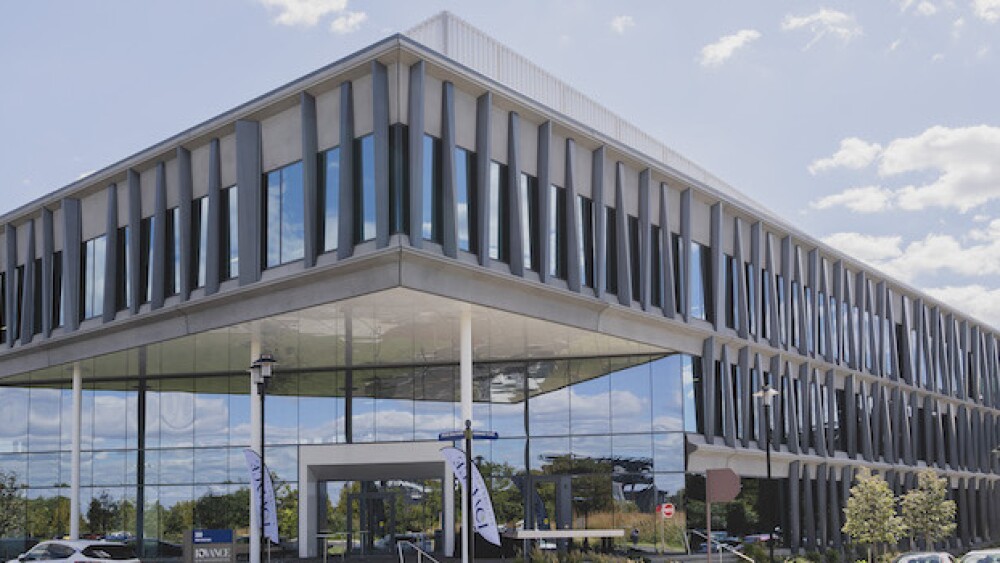On Friday, the regulator greenlit Iovance’s lifileucel to treat advanced melanoma. Prior to the approval, experts told BioSpace that tumor-infiltrating lymphocytes therapies also hold the potential to treat several other solid tumors.
Pictured: The Iovance Cell Therapy Center/courtesy of Iovance Biotherapeutics
Friday, the FDA granted approval to Iovance Biotherapeutics’ lifileucel as the first one-time cell therapy for a solid tumor and the first tumor-infiltrating lymphocytes (TIL) therapy.
Amtagvi, as lifileucel will be known commercially, was approved under the FDA’s Accelerated Approval pathway, which allows the greenlighting of medicines for serious or life-threatening diseases based on surrogate endpoints that are reasonably likely to predict clinical benefit.
“The approval of Amtagvi represents the culmination of scientific and clinical research efforts leading to a novel T cell immunotherapy for patients with limited treatment options,” Peter Marks, director of the FDA’s Center for Biologics Evaluation and Research, said in a statement.
Each year, approximately 8,000 people in the U.S. die from melanoma, according to Iovance’s approval announcement. “The approval of Amtagvi offers hope to those with advanced melanoma who have progressed following initial standard of care therapies, as the current treatment options are not effective for many patients,” Samantha R. Guild, president of AIM at Melanoma Foundation, said in the same press release.
Amtagvi is approved for autologous use only and carries a boxed warning for treatment-related mortality, prolonged severe cytopenia, severe infection, and cardiopulmonary and renal impairment.
Speaking with BioSpace ahead of the approval, experts said it would give the space much-needed momentum.
“It has taken a long time, but an approval would clearly validate the progress the field is making, and we expect that to increase from here rapidly,” Lynn Seely, CEO of Lyell, a clinical-stage company developing TIL and CAR-T therapies, told BioSpace.
40 Years in the Making
TIL technology has taken nearly four decades to reach maturity. The method was developed by Steven Rosenberg and colleagues at the National Cancer Institute in 1982 using mouse cells; they applied the method to melanoma patients in 1988, and the treatment has shown great efficacy in treating advanced melanoma in animal research and clinical trials.
TIL therapies take advantage of the patient’s own immune cells—lymphocytes—which tend to be suppressed in the tumor environment. These cells can be extracted from tumor biopsies, expanded in numbers or revamped for better efficacy, then transfused back into the patient, leading to antitumor activity.
“The very fact that these lymphocytes have come into the tumor environment suggests that [they] have recognized something important in the tumor” and can effectively fight it, said Madan Jagasia, CEO of Obsidian Therapeutics, which is developing genetically modified TIL therapies.
TIL vs. CAR-T
Although CAR-T therapies have transformed the way blood cancers are treated, deploying them against solid tumors, which account for 90% of the world’s cancer cases, has proven more challenging.
Part of the draw for TIL therapies is their ability to recognize multiple antigens simultaneously, something CAR-Ts are not able to do. Conventional CAR-T can only recognize a small number of proteins on the surface of tumor cells, while TILs can identify tumor targets derived from intra- or extracellular tumor proteins, said Sammy Farah, CEO of Turnstone Biologics, a clinical-stage biotech company developing TIL therapies for breast and colorectal cancers and uveal melanoma. He added that because solid tumors are known to be heterogeneous, TILs are likely to be successful as a treatment modality.
Breaking New Ground
While more than 75 TIL immunotherapies are in preclinical or clinical studies for various indications, melanoma has been the poster child for the space, and Iovance is the first to cross the finish line with a TIL therapy against advanced disease.
“There are no FDA-approved options for advanced melanoma after the current standard of care,” Iovance Chief Medical Officer Friedrich Graf Finckenstein told BioSpace prior to the approval, adding that the company is confident in lifileucel’s potential to “redefine the treatment paradigm for these patients.”
Iovance completed its rolling BLA submission to the FDA in March 2023, backed by clinical data showing that lifileucel elicited a 31% objective response rate with a median duration of response not reached at 18.6 months follow-up, with 42% of responses lasting for two years or longer.
“TIL, which is a cell therapy, offers the potential of long-term curative responses, which small molecules haven’t,” for melanoma patients, said Jason Bock, CEO of CTMC, a joint venture between biotech Resilience and MD Anderson Cancer Center. Lifileucel will be especially important for the nearly 50% of patients for whom checkpoint inhibitors have not worked, Bock told BioSpace.
Tanisha Jackson, scientific program director of the Melanoma Research Alliance agreed, saying, “Not only is this great for patients with melanoma, we also expect that TIL therapy will have broader implications in the treatment of many other cancer types.”
Scaling Challenges
While a big win for the field, experts envisage multiple challenges in scaling up manufacturing. TIL production time is approximately four to six weeks, Lyell’s Seely said. Shorter culture time is associated with improved cell quality, functionality and positive clinical outcomes in metastatic melanoma patients, an objective she said Lyell is trying to achieve. “We are advancing new manufacturing protocols designed to reduce the TIL culture duration to less than three weeks without impacting the quality of TIL,” she shared. Meanwhile, Farah added that patient-to-patient variation is arguably the biggest challenge to scaling manufacturing.
Bock believes that until problems around scaling production are resolved, the cost of TILs will remain high. “It is one of the most complicated therapies. It is only after we figure out how to scale the production and processes to manufacture these [that] we can expect the cost to come down,” he said.
Iovance, however, does not expect to run into any manufacturing snags, Chief Operating Officer Igor Bilinsky told BioSpace earlier this month, adding that the company has shortened the manufacturing time for lifileucel from six weeks to 22 days. The company instituted its first centralized cell therapy center in Philadelphia in 2021 to keep up with the potential rise in demand.
Meanwhile, Jackson pointed out that there are several unknowns with respect to the cost of TILs, which could affect access to these therapies. “We don’t know what the therapy will list for, how insurance companies will cover it, and what sort of patient assistance programs will be put in place,” she said.
Potential Beyond Melanoma
Besides melanoma, Iovance has begun investigating the potential of TIL in other solid tumor types, including metastatic non-small cell lung cancer (NSCLC) and gynecological cancers, Bilinsky said. Lyell is also testing its TIL therapy in NSCLC, which Seely said is more challenging to treat than melanoma.
“Some of the hardest to treat, lower inflammatory and lower mutational burden cancers can also represent prime targets for TIL therapy,” Farah added.
Meanwhile, Obsidian is genetically modifying TILs in an effort to limit the side effects that patients experience. The company’s lead candidate for melanoma produces a membrane-bound cytokine, IL-15, against a secreted cytokine to reduce toxicities associated with high-dose IL-2 administered with conventional TILs.
As companies continue to develop TILs for various indications, Bock said the approval “will usher in a whole new wave of innovation to treat all solid tumors.”
Aayushi Pratap is a New York-based health and science journalist and an alum of Columbia Journalism School. Reach her on LinkedIn.
Heather McKenzie is a senior editor at BioSpace. You can reach her at heather.mckenzie@biospace.com. Also follow her on LinkedIn.
Correction, Feb. 16: This article has been updated from its original version to correct that lifileucel elicited a 31% objective response rate with a median duration of response not reached at 18.6 months follow-up. BioSpace regrets the error.





